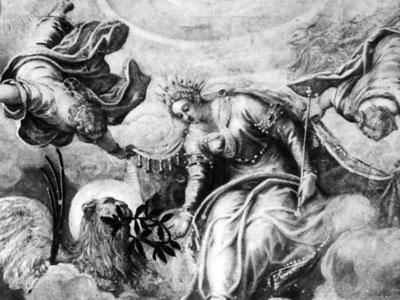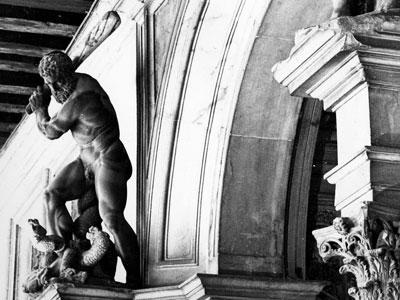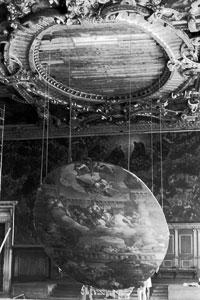Palazzo Ducale
Site and Significance
A Venetian Palace with Many Roles
Facing the Biblioteca Marciana, adjacent to the Basilica San Marco, the Palazzo Ducale commands a preeminent place in the geography of Venice. The palace served as the Doge’s residence until 1797, when the city fell to Napoleon’s forces. French occupation of the city also ended the palazzo’s role as a central political and civic office; under Republican Venice, the building had housed government agencies such as the courts of law, civil administration, interrogation rooms, and, before they were moved to the nearby Piombi building, prisons. Construction of the palace began in the early fourteenth century, though work did not end until 1424, and significant architectural additions to the original structure continued through the late sixteenth century.
Our Involvement
Restoring a Mix of Styles
The Palazzo Ducale is notable for its unique mix of architectural and decorative styles. After a 1574 fire damaged the palace, it was rebuilt according to the original Gothic design, and the current structure retains a Gothic foundation along with late Renaissance structural additions. The building is also the setting for a decorative scheme that includes work from some of the city’s finest craftsmen and artists, including paintings by Renaissance masters Tintoretto and Paolo Veronese. World Monuments Fund's (WMF) work at the site included conservation of two separate decorative schemes: one project, from 1974 to 1985, repaired stuccoes in the sixteenth-century Scala d’Oro. Another, begun in 1983 and finished in 1985, restored Tintoretto’s Paradise, dating from around 1590, in the Sala del Maggior Consiglio.
Important Artworks Protected
WMF’s work at the Palazzo Ducale resulted in much-needed improvements to a decorative suite that is widely considered one of the finest of its kind. The interventions, in 1974 and again in 1983, successfully protected important works by some of Venice’s greatest talents; Tintoretto’s Paradise, in particular, represents one of the most ambitious and skillfully executed works by the artist—perhaps the last great painter in the Venetian School.
Learn More
World Monuments Fund safeguards cultural heritage around the globe, ensuring our treasured places are preserved for present and future generations.
Sign up for our newsletter to receive regular updates on our projects, stories from the field, upcoming events, and more!
![]()





